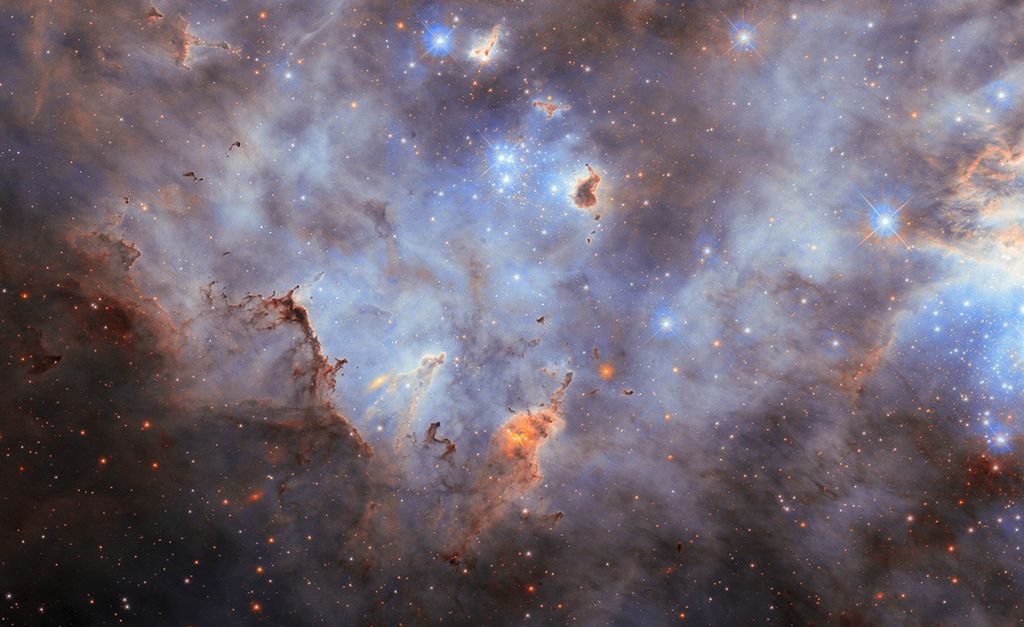1 min read
How Dense Pillars Form in Molecular Clouds
This animation shows how massive stars, which form in super cold molecular clouds over millions of years, actively influence their surroundings.
These heavyweights send out a significant amount of ultraviolet light and stellar winds, which ionize and heat up the surrounding gas, leading to the formation of roughly spherical bubbles.
Pressure in these bubbles builds up, rapidly expanding into the surrounding gas and sweeping up nearby cold interstellar gas, which is neutral (not ionized).
There is a sharp line between ionized and neutral gas, known as an ionization front.
As the bubble expands, it plows through the neutral, turbulent interstellar gas. Eventually, the ionization front begins to fragment.
Denser regions of neutral gas form pillars that point toward the center of the bubble.
The tips of these pillars are the densest and most resistant to erosion by the surrounding stars' ultraviolet light and winds, leading to cavities with pillar-like protrusions.
These dense pillars may ultimately collapse, going on to trigger new star formation.
See an example of this phenomenon in the Quintuplet Cluster, Tour Stop 8 of the ViewSpace Interactive Image Tour: Center of the Milky Way Galaxy.
- Release DateFebruary 13, 2025
- CreditVideo: NASA, ESA, STScI
Share
Details
Laura Betz
NASA’s Goddard Space Flight Center
Greenbelt, Maryland
laura.e.betz@nasa.gov
NASA, ESA, STScI

































